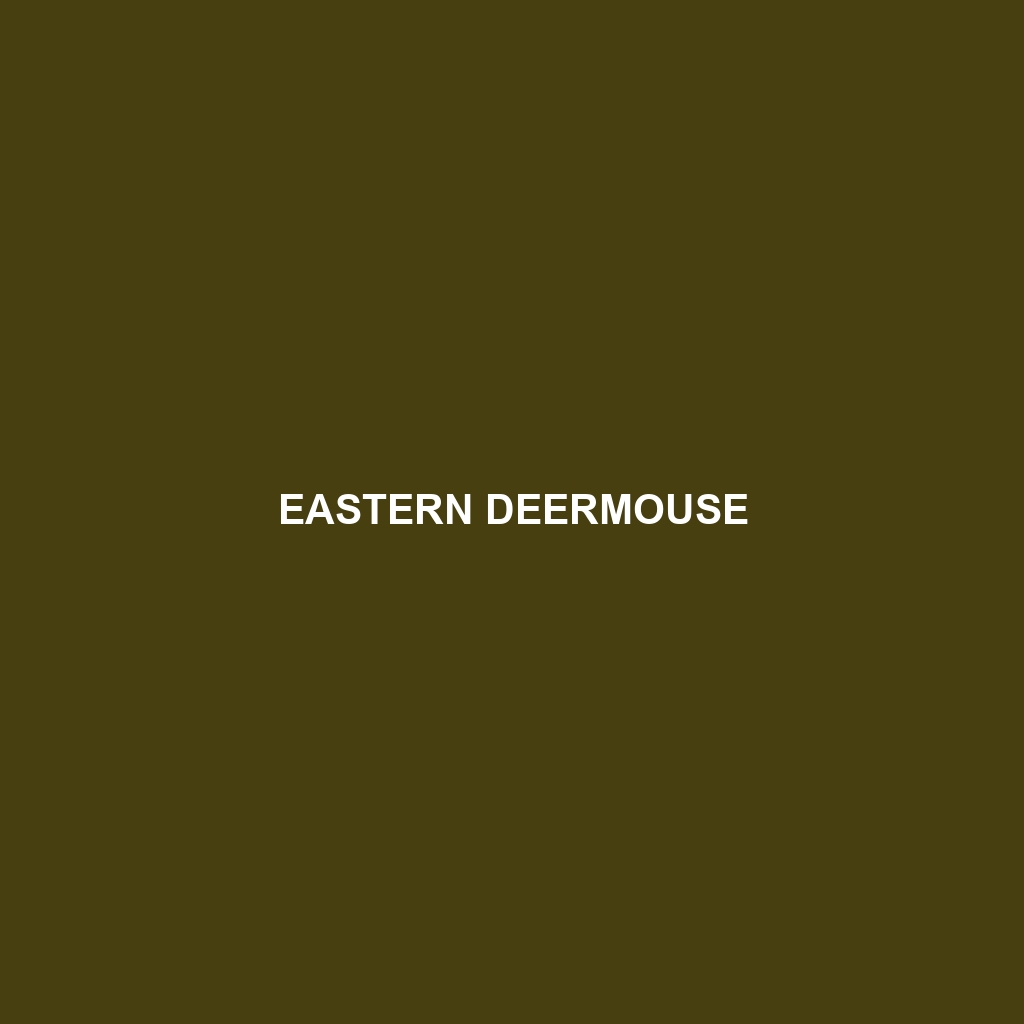Eastern Deermouse (Scientific Name: Peromyscus maniculatus)
Common Name: Eastern Deermouse
Scientific Name: Peromyscus maniculatus
Habitat
The Eastern Deermouse primarily inhabits a variety of environments across North America. It is commonly found in forests, grasslands, and shrublands, extending from southeastern Canada through the eastern United States and parts of Mexico. This species prefers areas with ample cover, such as dense underbrush, leaf litter, and rocky outcrops, which provide protection from predators.
Physical Characteristics
Eastern Deermice are small rodents, typically measuring between 5 to 8 inches in body length, with a tail that is equally long. Their fur is usually a mix of gray, brown, and tan, providing excellent camouflage in their natural habitats. Distinctive features include large eyes and ears, which enhance their ability to detect predators. Their underbelly is white, while their feet are small and padded, making them agile climbers and jumpers.
Behavior
This species is primarily nocturnal, engaging in most of its activities at night. Eastern Deermice are known for their social behaviors, often living in small family groups. They are excellent climbers and are skilled at navigating their environments. Their ability to adapt to various habitats is essential for their survival. Additionally, they exhibit territorial behaviors, marking their home ranges with scent.
Diet
The diet of the Eastern Deermouse includes a mix of seeds, nuts, fruits, and insects. They are omnivorous and opportunistic feeders, often foraging for food near their nests. In colder months, they store food in hidden caches to sustain themselves during lean periods. The Eastern Deermouse’s varied diet enables it to thrive in diverse ecosystems.
Reproduction
Eastern Deermice breed throughout the year, with peak breeding seasons occurring in spring and summer. A typical litter consists of 2 to 6 offspring, which are born hairless and helpless. The young grow rapidly and are weaned after about three weeks. Maternal care is significant, as the mother often stays with her young for several weeks to ensure their survival.
Conservation Status
Currently, the Eastern Deermouse is not considered endangered or threatened. Its populations remain stable due to its adaptability to various habitats and availability of resources. However, habitat loss and environmental changes could impact its future viability.
Interesting Facts
One fascinating fact about the Eastern Deermouse is its ability to enter a state similar to hibernation when exposed to extreme cold. This torpid state helps them conserve energy during harsh weather conditions. Additionally, it plays a crucial role in seed dispersal, contributing to the health of its ecosystem.
Role in Ecosystem
The Eastern Deermouse is an essential part of its ecosystem, serving as both predator and prey. As a consumer of insects and seeds, it helps maintain plant populations and control insect populations. Furthermore, it is a food source for various predators, including owls, snakes, and foxes, highlighting its integral role in the food web.
